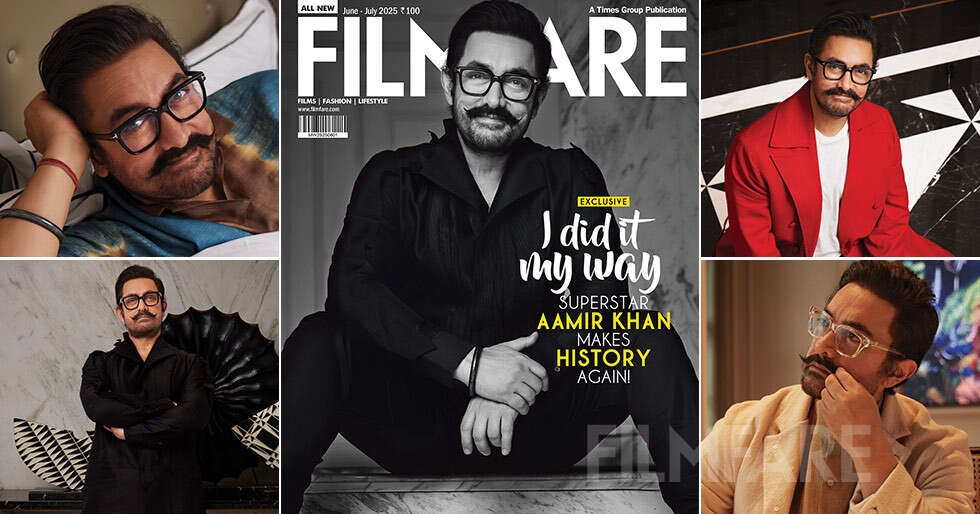Our screen heroes don’t age, they simply grow sharper and more astute. Aamir Khan turned 60 this year, with nearly four decades in the business,if you count his brief appearance in Holi (1984), well before his full-fledged launch in Qayamat Se Qayamat Tak (1988).
That in itself is reason enough to celebrate and crank up the volume. Is there anything Aamir can’t do? He can make you laugh without a hint of slapstick, move you to tears with quiet poignancy and send shivers down your spine when the drama kicks in. He remains one of the most respected stars in the industry, known not just for his artistry but for his unrelenting pursuit of perfection.
The best actors reveal universal truths. Aamir’s films have always done just that. From Sarfarosh to Dangal, Taare Zameen Par to Rang De Basanti, Lagaan to PK. His imagination and integrity shine through, and the common man relates to it. You don’t need exotic foreign locales or couture wardrobes in an Aamir Khan film. What you get is unvarnished truth. His performances don’t just linger, they lodge themselves in your heart. Call it marketing savvy, call it craft, call it plain honesty… Whatever you name it, Aamir’s work exudes sincerity. There’s always intent, always “neeyat”. When he sings Pehla nasha, you feel what first love must truly be like. When he utters, “Sach aur saahas hai jiske mann mein ho…ant mein jeet usi ki ho,” it stirs something deep. His searing monologue in the climax of Rang De Basanti, only Aamir could have pulled that off. Perhaps he hasn’t explored his craft to its fullest.
But what he has already achieved surpasses what others could hope to in a lifetime. Right now, he’s gearing up to reveal both sharpness and soul in Sitaare Zameen Par. He casually changes outfits four times for photographer Suresh Natarajan before settling on the stairs of a hotel fire exit to chat with us. Meeting and interviewing Aamir Khan after all these years feels like a homecoming. We’re overwhelmed, to say the least. Gathering our thoughts, and emotions, we begin:
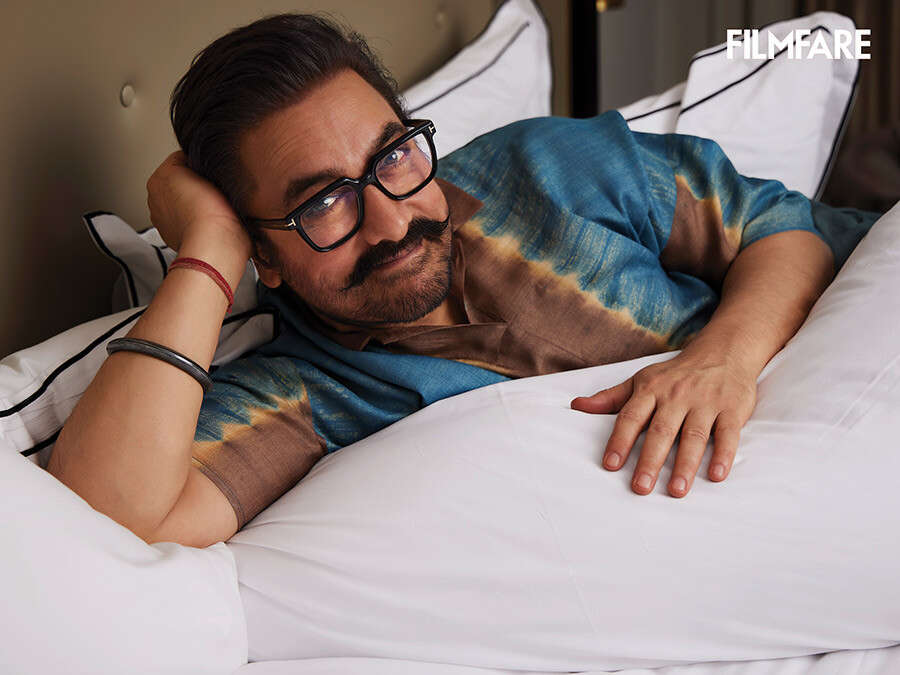
When you look back at your journey of 38 years as an actor, what would you tell your younger self?
Nothing…There’s a reason why I’ll tell him nothing. I would allow my younger self to experience what he experiences. Why should I tell him anything?
You started as an AD with your uncle, what is your greatest learning as a person?
Follow your heart. Listen to your inner self.
And you think you’ve done that?
In most cases. Whenever I’ve taken a practical decision, which is supposed to be a sensible decision, I’ve gone wrong. Whenever I’ve followed my heart, I’ve gone right.
How do you know what your heart is feeling?
I’ll give you an example. When I decided to do Lagaan, almost everyone around me said, “Don’t.” Friends, colleagues, well-wishers, one thought it was a good idea. The same thing happened earlier, when I chose to quit formal education after my 12th grade. Every elder in my life, family, friends, cousins, peers, they all said, No, don’t stop your education. But I kept telling them: I’m not stopping my education; I’m starting it. For me, films were the classroom. That’s where I wanted to be. Why should I continue learning things that don’t excite me, especially when I was already clear about my path? Everyone else was just trying to be practical. And back then, not being a graduate was a huge deal. I’ve always been a bit of a Rancho, even before 3 Idiots existed.
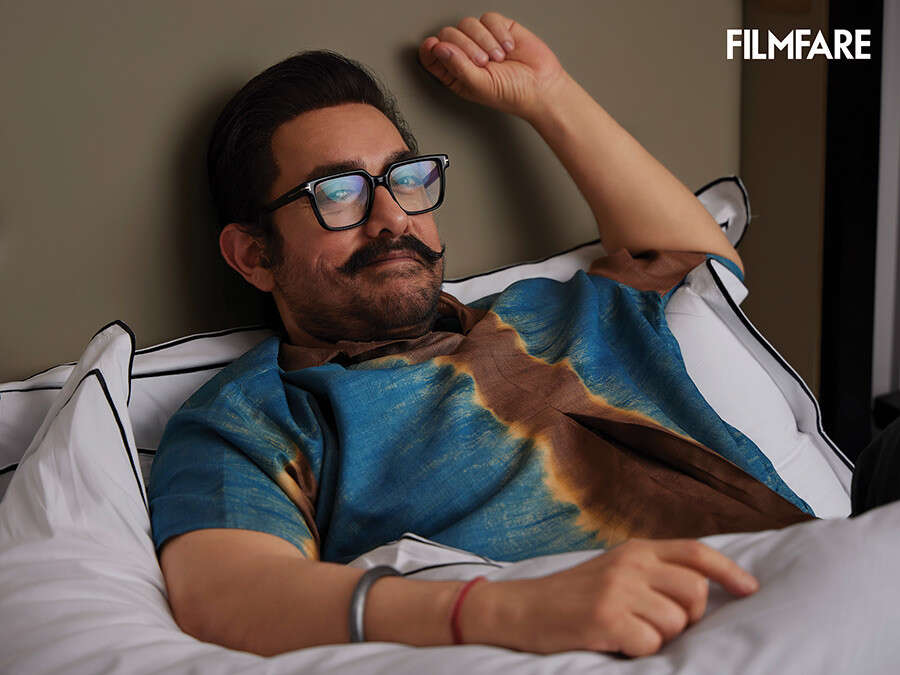
Were your parents okay with it?
No, no, absolutely not. They didn’t want me in films in the first place.
Were you an assistant for uncle Nasir Hussain on Zamaane Ko Dikhana Hai or Manzil Manzil?
I was on Manzil Manzil and Zabardast.
Tell us about that experience you had being with stars?
I’ve got plenty of stories from those early days some of them don’t bear repitition. I don’t recall exact dates though. When I joined as an assistant director, Manzil Manzil and Zabardast had already begun shooting. One of my first memories is a song shoot for Manzil Manzil at Filmistan Studios in August. Leena Das was performing to Hey baba. I asked the chief AD for the day’s paperwork, location breakdown, props, costumes, actors. He looked at me blankly: “We haven’t done all that.” I was stunned. For me, that kind of prep was basic. After that schedule, I spent two weeks at the office, detailing every requirement scene by scene. No one else was doing it then but to me, it was just common sense.
So you spoke to your uncle about it? Was there a conflict?
He didn’t really know what I was doing, he’d never done paperwork either. But to me, it was just a more organised way of working. During one schedule, we had date issues. We were meant to shoot at Bhalla Bungalow and everyone was available, Sunny (Deol), Dimple (Kapadia), Danny (Denzongpa), Prem Chopra, all except Kulbhushanji (Kharbanda). So Nasir saab said we’d have to cancel. I said, “No, we can still shoot.” He asked how. I explained we could shoot the scenes with a duplicate standing in for Kulbhushanji, and once he was available, we’d just need two days to get his reverse angles. And that approach only worked because we had the paperwork in place, it gave us the clarity to plan around problems.
![]()
Nasir Hussain was this iconic filmmaker but you were wired towards Guru Dutt and Bimal Roy’s cinema. Was there a conflict of what you believed in?
No, I loved all his films. I thought Teesri Manzil, Caravan, Yaadon ki Baaraat, Hum Kisi Se Kam Nahi, Tumsa Nahi Dekha, Baharon Ke Sapne… all these films were great. I didn’t have any creative conflict with him. Not at all. I believed in his cinema. In fact, I did think his cinema was highly entertaining. When you watch a Nasir Hussain film, you feel like you’re on a picnic. There is humour, beautiful locations, a lot of romance and great music.
Were you ever present when RD Burman was recording for Manzil Manzil?
Yes, I was there for the recording of a song.
Can you recall anything?
Yeah, I used to visit Pancham Uncle’s setting room. Majrooh Sultanpuri saab would be there, along with Manohari da, Bablu da, and all the ADs. Pancham Uncle would hum tunes on his harmonium while Nasir saab quietly listened, playing with his little silver dibiya of paan. If a tune caught his ear, he’d say, “Play this again tomorrow morning,” and that’s the one they’d go ahead with. Then Majrooh saab would pen the lyrics, and they’d lock the tune.
You rejected Lagaan, did you? In the beginning?
When Ashu (Ashutosh Gowariker) first pitched the idea, it was just two minutes long, I rejected it. “They play a cricket match to cancel the Lagaan” didn’t make sense to me. But once I heard the full script, I loved it. Still, I was hesitant. It felt too unusual for mainstream Indian cinema, and I wasn’t sure who could produce it right. It took me a year and a half to say yes. Eventually, I realised the script had gotten under my skin. I had to do it. That’s when I decided to turn producer. If I couldn’t find someone to back it, I’d do it my way.

We’ve read how there was almost like a workshop in your house where all the actors were present and you all were reading scenes from the film…
Well, I was trying very hard in the ’90s to tell my directors and producers that let’s do one film at a time. But none of them had the courage to go ahead with that. I wasn’t expected to last more than a year.
Really? But you had Qayamat Se Qayamat Tak.
So what?
Four and five shifts were the norm at that point…
Three. That was the norm. You really couldn’t do more than three shifts a day. Occasionally people would do four, but I didn’t want to go down that road. At the time, actors were working on 60-plus films. Even Anil Kapoor, who had the least number, was juggling 33 projects. So I thought, let me be practical. I signed 10 films, figuring one-third of them might actually get made. But then, surprise, they all started. And that’s when I realised I just can’t work like this. One film at a time, that’s the way I need to function. But now I’d committed to 10, and I had to see them through.
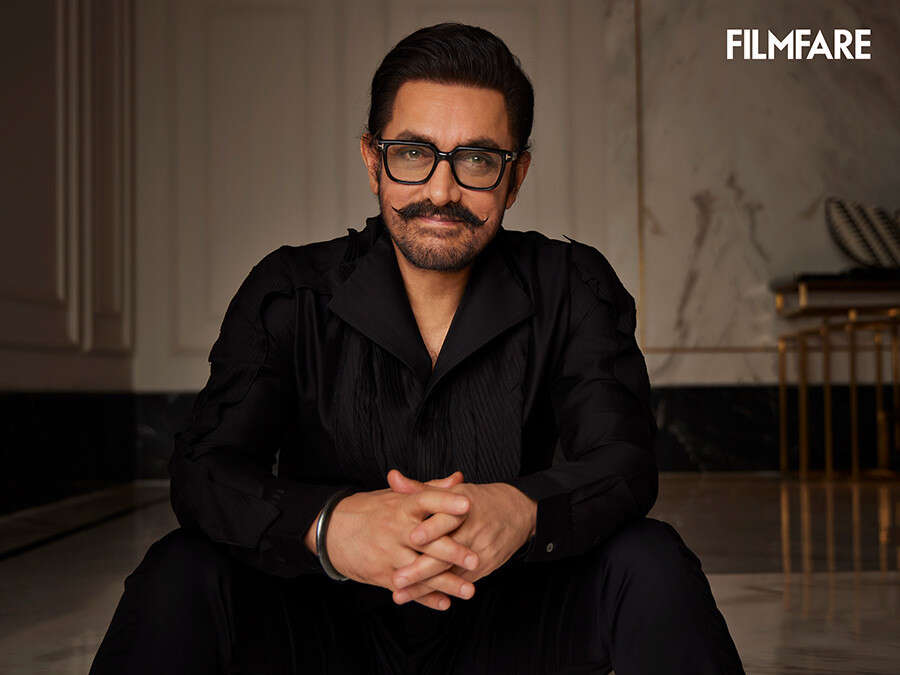
So you were doing three shifts a day?
In the first two or three years of my career, I was doing two shifts a day, sometimes even three. But soon, I stopped signing new films. And when I did that, everyone around me panicked. “He’s not signing anything? He doesn’t want to work? What is this behaviour?” they’d say. Because that’s not how things worked back then. In the ’90s, I’d tell producers and directors, “Let’s shoot in one go. Let’s do sync sound.” But no one was interested. So when I produced my first film, I decided to do it exactly the way I’d always believed in. One schedule. One film at a time. Everyone committed to it. We’d do sync sound. And I brought in a first AD to run the floor properly. You see, by the time I started assisting Nasir saab, I had already directed my first film. It was a short adaptation of The Open Window by HH Munro, better known as Saki. I loved the story and gave it an Indian setting. That was the kind of storytelling I wanted to pursue. Organised, focused, and true to the vision.
Is it available on YouTube?
No, it’s not. I don’t even have the original copy. So, I shot my first film as a director before I joined my uncle as an AD. So, when I shot my own film, I adapted it myself. I wrote the script, the dialogue, even the scene breakdowns. I was directing and assisting with everything else in my career.
And you acted in the film as well?
No, no, Amol Gupte was the lead, along with my younger sister Farhat, who was around 14 then. I needed someone that age, and Farhat is a brilliant actor. I wasn’t acting, just directing. I learnt filmmaking the Gurukul way, simply by being around it. I loved stories. Whenever a writer came to pitch to my dad, I’d sit in, sometimes for half an hour, sometimes for a full three-hour narration. From age five or six till I became an AD at 18, I was always listening. I didn’t think I’d enter films. I was into sports. And my parents were totally against us joining the industry. We weren’t even allowed on sets; they were very conservative.
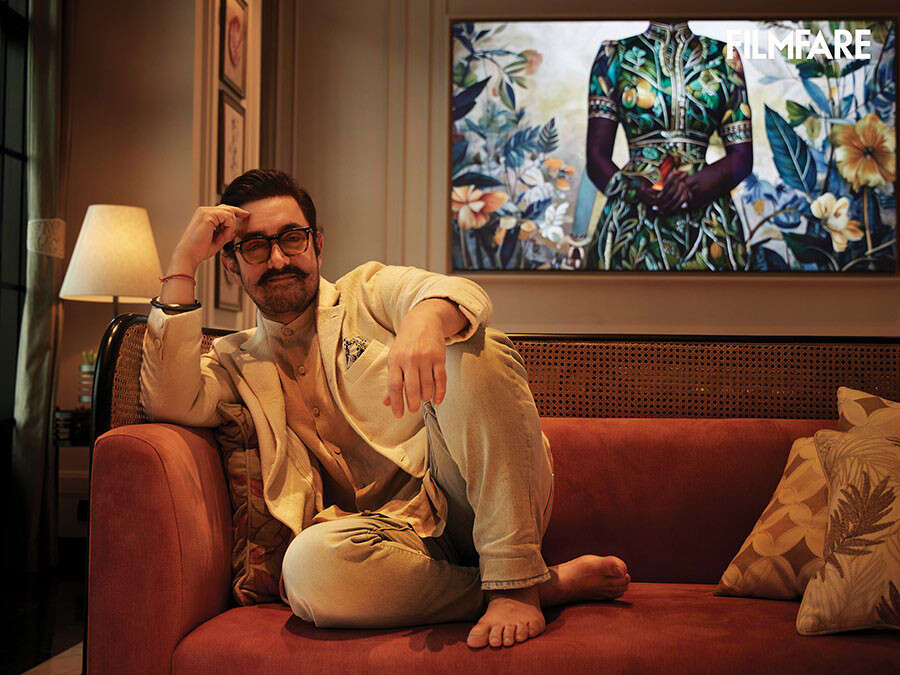
Wow. Really?
Once in a while, yes. I’ve never been on film sets or shoots much, but I’ve always been on the other side, editing, discussions, that sort of thing. For instance, I saw Yaadon Ki Baaraat, when it was just eight reels ready. I’ve watched films from an incomplete stage, seen them slowly fall into place. So, in that sense, I didn’t learn filmmaking at an institute, I learnt it by watching it unfold around me. I didn’t need formal teaching. That said, I did act in two diploma films made by film institute students. There was no acting course back then, so they needed actors, and
I stepped in.
You remember the directors?
Yes, of course. The first film was Subhah Subhah, directed by Inderjeet Singh Bansal, a camera student. The second was adapted from a German book, Young Törless, and directed by Rajiv Singh, an editing student. I also did a song exercise for a student director named Firoza. Ketan Mehta had seen the rushes of some of these films while at FTII and reached out to me through Amol Gupte. I wasn’t actually interested in acting in films. But I’d heard that for the first time in India, a Steadicam was going to be used. It was being brought in from abroad for Holi (1984), with Jahangir Chaudhary as the cinematographer. Each scene would be a single shot, with no cuts.
But did that happen?
I was really excited to see what a Steadicam looked like. This was a time when it didn’t exist in India, and as film students, we’d only heard about this camera that could move smoothly, down stairs, up, alongside someone walking, without any shake. I was fascinated and thought, “Wow, what is this camera? I need to see it.” Plus, it was a chance to watch Ketan at work. Holi also had Naseeruddin Shah and Om Puri in it. None of us had roles initially. When we arrived at FTII, there were around 30–40 young actors from across India, all between 18 and 20. Ketan told us, “You’ll all take part in a two-week workshop. At the end of it, I’ll decide who plays which role.” There were two parts that stood out a bit more than the rest, the character Ranjeet, and the fresher, the young boy who joins in.
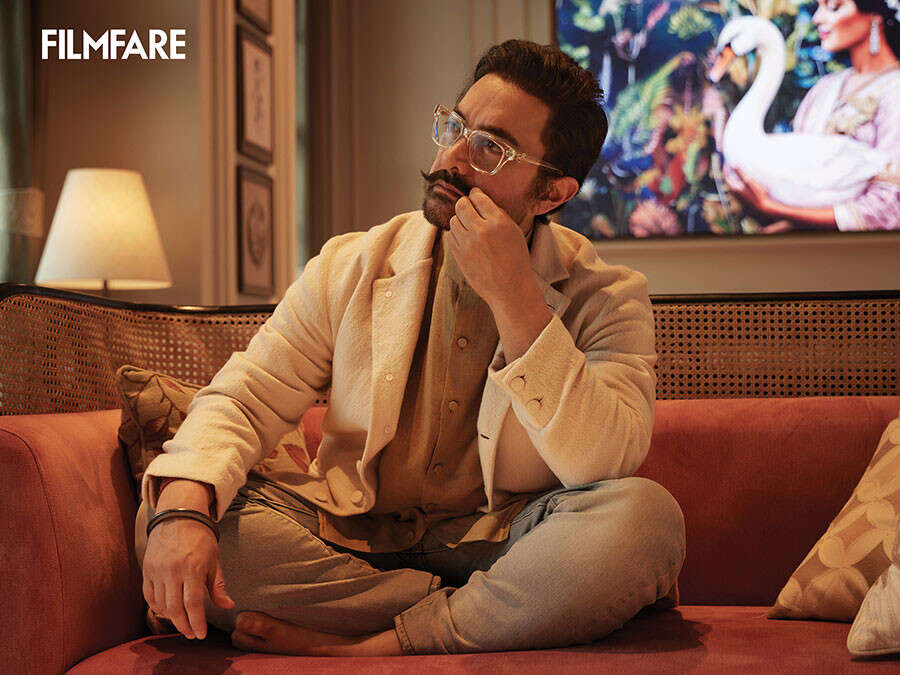
Who gets ragged…
No, he doesn’t get ragged. The fresher was eventually played by a boy named Rahul Ranade, who’s now a music composer. Rahul played the innocent first-year student who befriends Ranjeet, a college senior. Ketan had actually approached me for that role after seeing me in Young Törless. But when I met him, he took one look at me and said, “What’s happened to your hair?” I had shaved my head completely bald.
It wasn’t for the role?
I shaved my head because my girlfriend then had dumped me. A week later, someone called to say Ketan wanted to meet me. I asked where and they said Churchgate. I’d never met him before. And there were no mobiles back then, so I just showed up. As I walked in, Ketan looked at me and said, “What have you done to your hair?” I thought, “How does he even know what my hair looked like?” Apparently, he’d seen the rushes of Young Törless and wanted me for the fresher’s role, but now, I was bald. I looked completely different. So I was out. I then vied for the role of Ranjeet. It came down to Ashutosh and me. Ketan did one final reading with both of us and Ashutosh got the part. He’s beaten me to roles more than once. Later, there was West is West, directed by David Rathod, an American film. Back then, Raj Zutshi, Amol, Ashutosh, Neeraj, and I were all friends. Whenever we heard about a casting, we’d go together, like a little gang of six or seven. Anyway, Ashu got the role in Holi. I didn’t really have one. But I hadn’t come to act, I came to watch Ketan work and to see the Steadicam in action. The irony? The Steadicam never came. Jehangir ended up shooting the whole film handheld. Every scene was a single shot, and since 35mm reels couldn’t handle that length, they maxed out at 1000 feet, we shot the entire film on 16mm.
How many days did you all take to shoot?
40-45 days.
So you all were at the FTII all 40 days?
I was staying at the FTII. Amol and I were allowed to stay in FTII. But it has never been documented that you were assisting Ketan. I wasn’t assisting him. Not officially. I was there to observe how he worked. I was not his assistant. And actually, Holi never got released.

It was shown on Doordarshan…
It won the National Award for Best Cinematography. So that’s why it had to be shown on DD. And it was shown late at night.
Andaz Apna Apna, which is such a cult film today, wasn’t a hit when it first released. We hear some scenes, which were genuinely funny, got cut from the final edit…
No, no, nothing got changed. I can’t remember any scene getting cut. I don’t think we had any extra scenes. We didn’t even have dates. How can we have extra scenes?
But why do you think it flopped? Was it bad timing?
We can only guess. There was Salman with hits like Maine Pyar Kiya and Hum Aapke Hain Koun..! QSQT was mine. Raj Santoshi had Ghayal. So it was a big project. But it didn’t get an opening.
Rajji has been trying to remake it for the last 20 years now, with all of you.
He wants to make part two. Back then, it was a different audience. The film had all kinds of humour: situational, dialogue, slapstick, everything. But it just didn’t connect.Also, we had only four days for publicity before the release of the film, how were we expected to create a buzz.

Coming to Sitaare Zameen Par. Tell us how it came about…
During COVID, for the first time in my life, I was forced to stop working. From 18 to 56, I’d been lost in the intoxicating dream of cinema. We were midway through Laal Singh Chaddha when everything came to a halt. Alone at home, I began reflecting, on missing Junaid and Ira’s childhoods, on how little time I’d spent with Ammi, and on giving my entire adult life to films. The guilt hit me hard and I spiralled into depression.
I decided to quit everything, acting, producing, the works… My family was stunned. I started working with Ira at her Agatsu Foundation. But before that, I had already committed to Prasanna’s Champions. I called to back out, saying I was done with films. That same morning, Ira and Junaid sat me down and said I was being extreme, always swinging between all or nothing. They urged me to find balance. Kiran was the most affected. She hadn’t cried during our divorce, but she broke down when I said I was quitting cinema. “If you leave films, you’re leaving us,” she said. I didn’t understand her then. Eventually, their words sank in.
I told Prasanna that I need a week to think whether I want to do Sitaare Zameen Par. Then Laal Singh flopped. I sank deeper, it was the first time in years a film of mine failed to connect. Yes, there was Thugs Of Hindostan. When I saw the first cut of Thugs Of Hindostan I was appalled. I’d fought hard with Adi (Aditya Chopra) and Victor (Vijay Krishna Acharya), warning them it wouldn’t work. The structure was flawed. It was meant to be Zafira’s story, not Firangi’s, or anyone else’s. But no one listened.
But while you were doing the film you didn’t know it was going wrong?
The original Thugs Of Hindostan script I’d agreed to never got made, it kept changing. Normally, I wouldn’t accept that. But I take full responsibility, along with Victor and Adi. I told Adi, “Till here, I’m with you. But after watching the film, we’re in different boats. From where I sit, this is a disaster. I told Adi, picture paani tak nahi maangegi” (It will flop miserably). I urged them to rework it, we had a year but they were convinced it was great. The film bombed and my instincts were proven right. It still did a business of Rs 150 crs.
With Laal Singh Chaddha, about 25 per cent of the audience truly loved it but most didn’t connect. It still did Rs 55 crore, but for someone like me, or Salman, our ‘flops’ too earn Rs 150 crore and not 50. That sent me into a shell. I called Prasanna and told him I couldn’t do Sitaare Zameen Par an adaptation of Champions. He understood and asked if I’d at least stay on as producer. I agreed. We began planning two versions, Hindi with Farhan Akhtar and Tamil with Sivakarthikeyan. But since both featured neurodivergent leads, each required a fully language-specific cast. We were essentially making two different films.
As usual, I sat with the director and writer to finalise the script. Within 30 minutes of the first table read, I felt: “Why am I not doing this film?” That feeling kept coming back. By the end of the week, we’d locked the script. And I finally said it aloud: “This is a damn good script.” They asked me to do it. I hesitated, I’d already committed to Farhan and Siva, their dates were locked. But Prasanna insisted, “You were my first choice. If you’re feeling this now, it means you’ve come out of your depression. That reason doesn’t exist anymore.” I respected that. Prasanna had waited years after Shubh Mangal Saavdhan for a story he truly believed in. So I called Farhan and Siva, and explained everything honestly. They were gracious and supportive. And just like that, I came back.
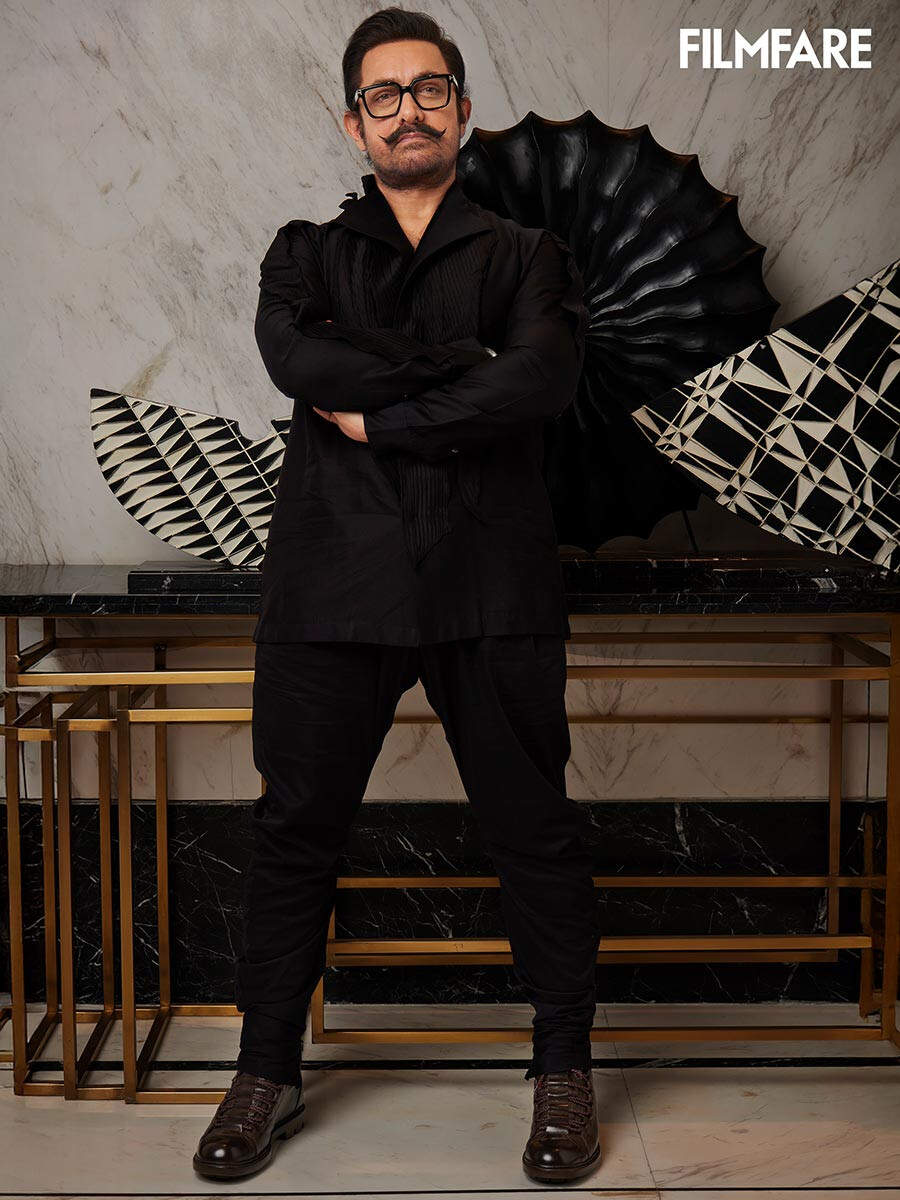
How did you navigate your own mental health space? And you know, as a father, when Ira was going through whatever she did, was it tough for the family?
Dealing with anything that causes your child pain is the hardest thing for any parent. You feel far more for your children than you ever could for yourself. That emotion runs deep. So, when Ira went through depression, it was incredibly difficult, not just for Reena and me but for the whole family. We did everything we could to support her and be there for her. I’m truly glad to see how far she’s come.
But like when she was growing up, were there signs?
This happened later, when Ira was around 18 or 19 and heading to college. I’m known in the family for not valuing formal education. I never pursued it myself. So Reena and Kiran, both highly educated women, warned me not to influence her. She was set to attend Utrecht University in Netherlands but didn’t want to go. Reena and Kiran sat me down and said, “Don’t you dare support her. You must tell her to go.” Though I was against it, I caved under pressure and told Ira she had to go. That’s when her depression began. Two years later, while I was in Spain working on Laal Singh, she called me and was sounding terrible. I immediately flew to Utrecht, packed her bags, and brought her home. Even in Mumbai, it was tough. Once depression sets in, it’s hard to deal with it. Sadly, a lot of young people face it today.
Did you see a therapist yourself?
Yeah, of course. I started therapy around four years ago.

And did it give you more clarity?
Absolutely. Therapy makes you realise so much, about yourself and about life. It’s helped me immensely. Honestly, I wish I’d known about therapy when I was 18. If I’d started then, I think my life would’ve been very different. Take something as basic as choosing a partner, after four years of therapy, I can now spot red flags from a mile away.
You are a red flag or you can see red flags?
I can see red flags from a mile away now, and more importantly, I’m working on my own. Because I finally know what they are. I know what triggers me. So, I do hope therapy makes me a better person. It’s given me a lot more strength to choose wisely… what I want to do and who I want to spend my time with. It brings so much clarity.
Do you think the stress of business also impacts your mental health? The kind of intense work schedules and stuff like that?
In most professions, like running a multinational company, the stress is real but doesn’t involve your emotions in the same way. In cinema, you’re constantly playing with emotions, pretending to feel things you haven’t actually experienced. In Talaash, for example, my character had lost a child. Every day on the set, I had to mentally put myself in that devastating space, reliving the grief as if it were real. That took a toll. Across my 35 films, I’ve had to navigate a wide range of emotions, not just as an actor but alongside the entire crew. Directors, cameramen, everyone absorbs these feelings because they’re witnessing or enabling emotionally intense scenes. And even though it’s make-believe, the emotions are real enough to trigger genuine chemical reactions. Sometimes I’d finish a scene yelling in rage and afterwards I’d sit there thinking, “What just happened?” It messes with your system.
So you feel much easier now after therapy?
I think so.
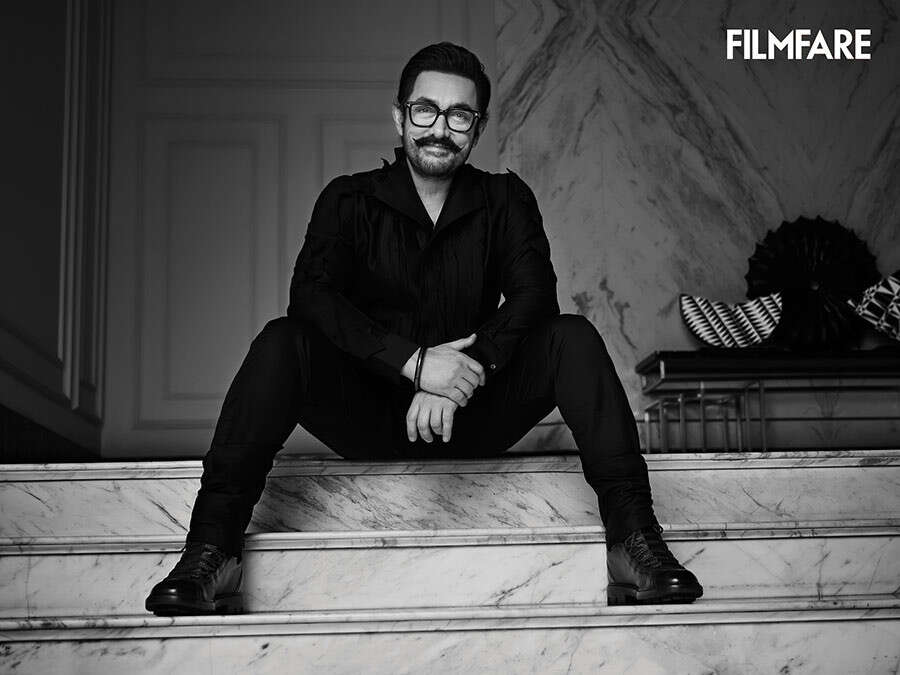
Somewhere I read that you used the word passive-aggressive to describe yourself…
I still am.
Can you give us an example?
When Reena and I fought, or when Kiran and I did, steel shutters would come down. Not just one but on all four sides. I would emotionally shut off. We’d be in the same house, going through the motions, doing all the usual things… except I wouldn’t communicate. Not even eye contact. Nothing. That kind of silence can be very difficult for the other person. And if I’m being honest, a lot of it came from ego. In those moments, I wasn’t functioning like an adult. It was my inner child acting out, wanting to be pampered, wanting the other person to make the first move. Wanting them to say, “It’s okay. I’m sorry.” It’s not something I’m proud of. But it’s a part of me I’ve come to recognise and work on.
Which could be months.
Years. Juhi (Chawla) and I didn’t speak for seven years. So it carried on for years in my case.
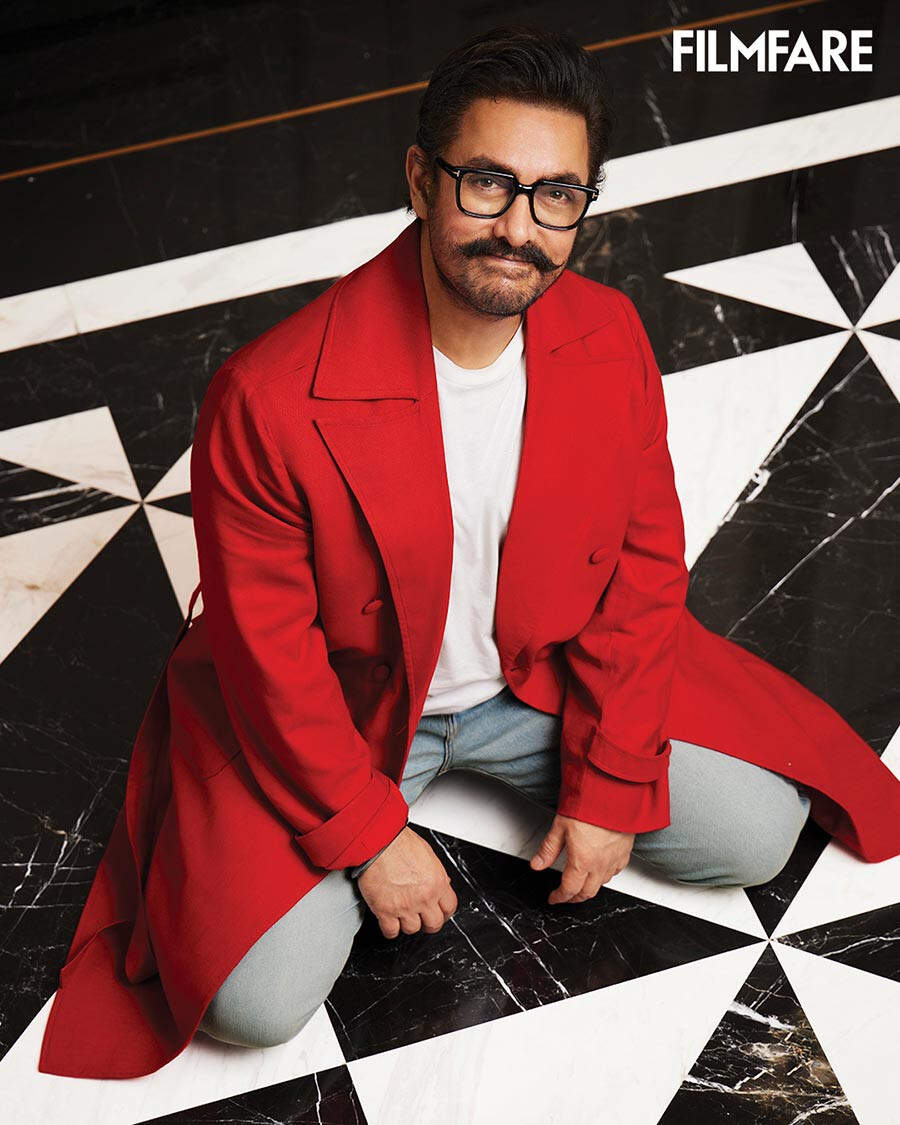
You haven’t spoken to us for 20 years.
You’ve also seen my passive-aggressive side, that’s another example. When I get angry, I really get angry. No matter what you say, I just can’t hear it. The strange part is, during a fight, say with Kiran, it could go on for three days, and she’d try to reach me, try to be reasonable. And there’d be a part of me, that’s saying, “Aamir, why are you being so stubborn? Just talk to her. She’s trying with so much love, what more do you want? Do you want her to suffer? What does she have to do to get through to you?” One side of my brain is pleading with me to stop, to let it go. But the words just won’t leave my mouth. I’m stuck. That’s one of the things that’s really improved with therapy.
You’ve connected with your exes so beautifully…
I’ve been fortunate that the two women in my life, Reena and Kiran, have both been remarkable. Though we’re no longer married, the love and respect have never faded. That’s what’s kept us close even after parting ways. There was no bitterness with either. During both divorces, we didn’t even hire separate lawyers. Just one lawyer, one conversation. That was it. These weren’t battles, just two people parting as partners, not adversaries. Reena and I were married for 16 years; we grew up together, I was 21, she was 19. Kiran and I also shared a deep, meaningful connection. But for a respectful, loving bond to continue after a marriage ends, both people have to want that. Reena is gracious, Kiran is gracious and I’ve tried to be the same. Even today, if I’m in a crisis, they’d be the first to stand by me and I’d do the same for them, no hesitation. These bonds aren’t performative, they’re deeply real. When Reena’s father was unwell and refused treatment, she called me. I convinced him to get help for his cancer. You can’t fake that kind of trust. At Ira’s wedding, seeing us all together,
I realised how rare this is.
So is Gauri meeting a more healed Aamir?
Yes, Gauri (Spratt) is meeting a different Aamir now, a more healed version. A little more at ease. Hopefully, a little better. Let’s see…
Also Read: Aamir Khan, Junaid Khan arrive at Salman Khan’s home ahead of Ira Khan, Nupur Shikhare’s wedding

